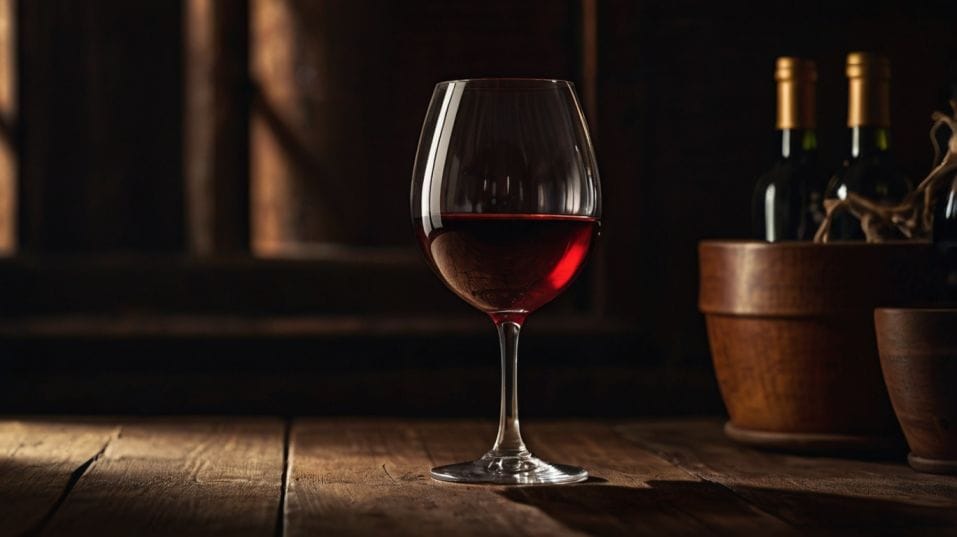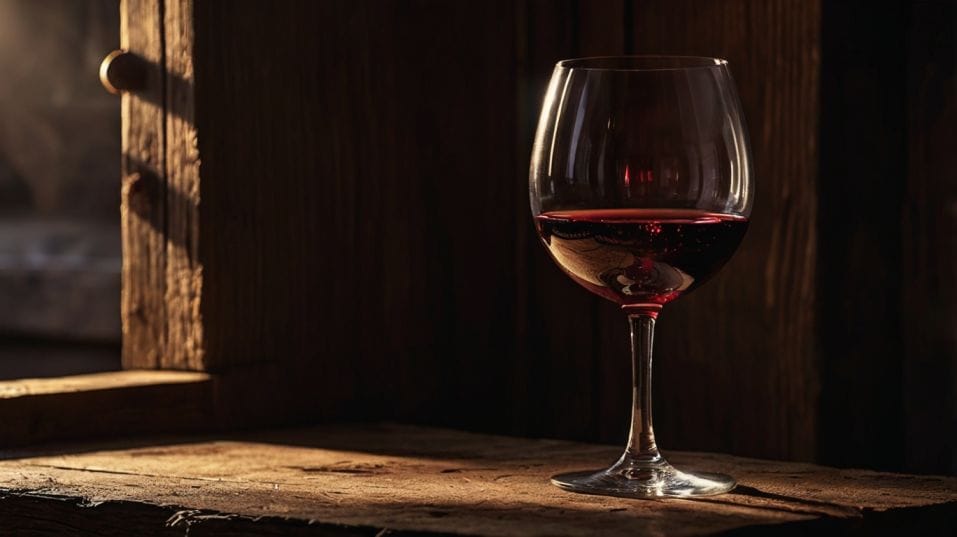Tannins: What They Are and How They Feel
Curious about red wine? Learn what tannins really are, how they feel, and how they shape flavor, texture, and food pairings with confidence.

Ever wonder why some red wines feel silky while others dry your mouth like strong tea? That’s tannins at work. They're not about flavor—they’re about feel.
Tannins give wine its shape, its edge, and its aging potential. Learning how to notice them in a sip changes the way you taste, choose, and pair.
If you’re curious about red wine or want to understand what makes one bottle bold and another smooth, start here.
What Tannins Actually Are
Tannins are polyphenols—naturally occurring compounds found in grape skins, seeds, and stems. You’ll also find them in the oak barrels many wines are aged in.
But in the glass, tannins don’t announce themselves with a bold flavor. Instead, they make their presence known through touch: the dry, sometimes grippy texture they leave in your mouth.
That drying sensation isn’t just your imagination. Tannins bind with the proteins in your saliva, reducing lubrication and leaving your mouth feeling tighter and more textured.
It’s the same reason strong black tea has that puckering effect. Wine just delivers it more elegantly—or at least, when well made.
These tactile qualities are what give tannins their place in the structure of wine. Think of them as scaffolding. In a young wine, tannins can feel firm, even aggressive.
But over time, especially in age-worthy reds, they soften and integrate. A well-balanced tannin structure can transform a sharp young red into a nuanced, velvety experience after years of careful aging.

Feeling Tannins: What to Look For
Tannin isn’t one-size-fits-all. Some wines coat your mouth like fine suede. Others hit hard and fast, drying out your gums with a sandy edge.
Learning to distinguish between these sensations sharpens your palate and helps you connect what you like to what you’re drinking.
How to Sense It
Here’s how to approach it: take a sip and pause. Pay attention not to the flavors, but to your mouth itself. Where do you feel dryness?
Across the tongue? Along your cheeks? Does the wine grip your gums and hold on, or does it brush past gently?
You might notice:
- Fine-grained tannins: soft, powdery, almost plush. These show up in well-aged reds or in grapes like Merlot and Pinot Noir when grown carefully.
- Firm tannins: structured and drying, often found in Cabernet Sauvignon, Nebbiolo, or young Bordeaux blends.
- Green or harsh tannins: raw-feeling, often a sign of under-ripe grapes or over-extracted winemaking.
Every tannin profile tells you something about the grape, the region, and the winemaker’s intent. And the better you get at reading those signals, the more confident you’ll feel choosing wines beyond the label.
How Tannins Interact with Food
Tannins and food have a deeply physical relationship. Because tannins bond with proteins, fatty or protein-rich dishes—think steak, aged cheese, duck confit, even portobello mushrooms—can soften a wine’s sharp edges and bring it into balance.
That mouth-drying quality you notice when sipping a tannic red on its own? It eases when you take a bite of something rich.
This isn't about complicated pairing theory. It's about understanding that a wine that seems too intense solo might transform beautifully with the right texture on the plate.
The reverse is also true. Pair a high-tannin red with a delicate, low-fat dish and it can overwhelm everything. The wine might seem harsh, or even bitter. That doesn’t mean the wine is flawed.
It means it’s out of sync with what’s on your fork. This is why knowing tannins matters. Not for trivia, but for taste.
Tannins in Winemaking: Decisions That Shape Texture
How tannins show up in your glass isn’t accidental. Winemakers shape tannin levels through choices made in the vineyard and the cellar.
Factors That Influence Tannins
- Grape variety: Some grapes are naturally more tannic. Cabernet Sauvignon, Nebbiolo, Syrah, and Tempranillo bring firm tannins. Pinot Noir, Barbera, and Gamay tend to be lighter.
- Ripeness at harvest: Underripe grapes bring sharper, greener tannins. Riper grapes (not overripe) yield softer, more rounded textures.
- Fermentation decisions: Winemakers can extract more tannin by leaving the juice in contact with skins longer, using punchdowns or pumpovers to intensify extraction, or even fermenting with stems.
- Oak aging: New oak barrels, especially those made from French or American oak, add their own tannins into the mix. This can deepen a wine’s texture—or make it feel overly wooded if not balanced.
When you start to understand how all these factors come together, you stop seeing wine as a mystery and start seeing it as a conversation. One you can participate in.
Choosing Wines by Tannin Profile
You don’t need to memorize varietals or study winemaking science to make smarter choices. Start with how you want a wine to feel.
Want something plush and smooth for a quiet night in? Look for softer, low-tannin reds—maybe a mature Rioja, a well-aged Chianti, or a Grenache blend from the Southern Rhône.
Craving structure and grip to go with a rich dinner? Lean into wines with firmer tannins: Barolo, Malbec from altitude, young Bordeaux blends, or a classic Syrah from the Northern Rhône.
Even within a single varietal, tannins vary by place. A Pinot Noir from Burgundy may feel taut and linear, while one from Oregon might be rounder and more approachable. Use this as a compass, not a rulebook.
And if you’re ever unsure, trust the feel. The more you pay attention to the texture in each sip, the better your instincts will become.
Final Thoughts
Tannins are more than chemistry. They’re part of the physical language of wine. When you learn to recognize how they feel—not just how they taste—you unlock a deeper understanding of what wine can offer.
They guide your food pairings, shape your aging decisions, and give you a new way to evaluate a wine’s quality and potential. And they make your wine journey more tactile, more intuitive, and more rewarding.
So next time you pour a red, take a moment. Tune in to the texture. Ask what kind of tannins you’re feeling—and what kind of experience they’re offering. Then follow that thread.
Try a grape known for structure. Revisit a style you’ve overlooked. Or explore an older bottle to see how tannins evolve with time. Wine isn’t just about taste. It’s about feel—and you’re just starting to get a grip.




